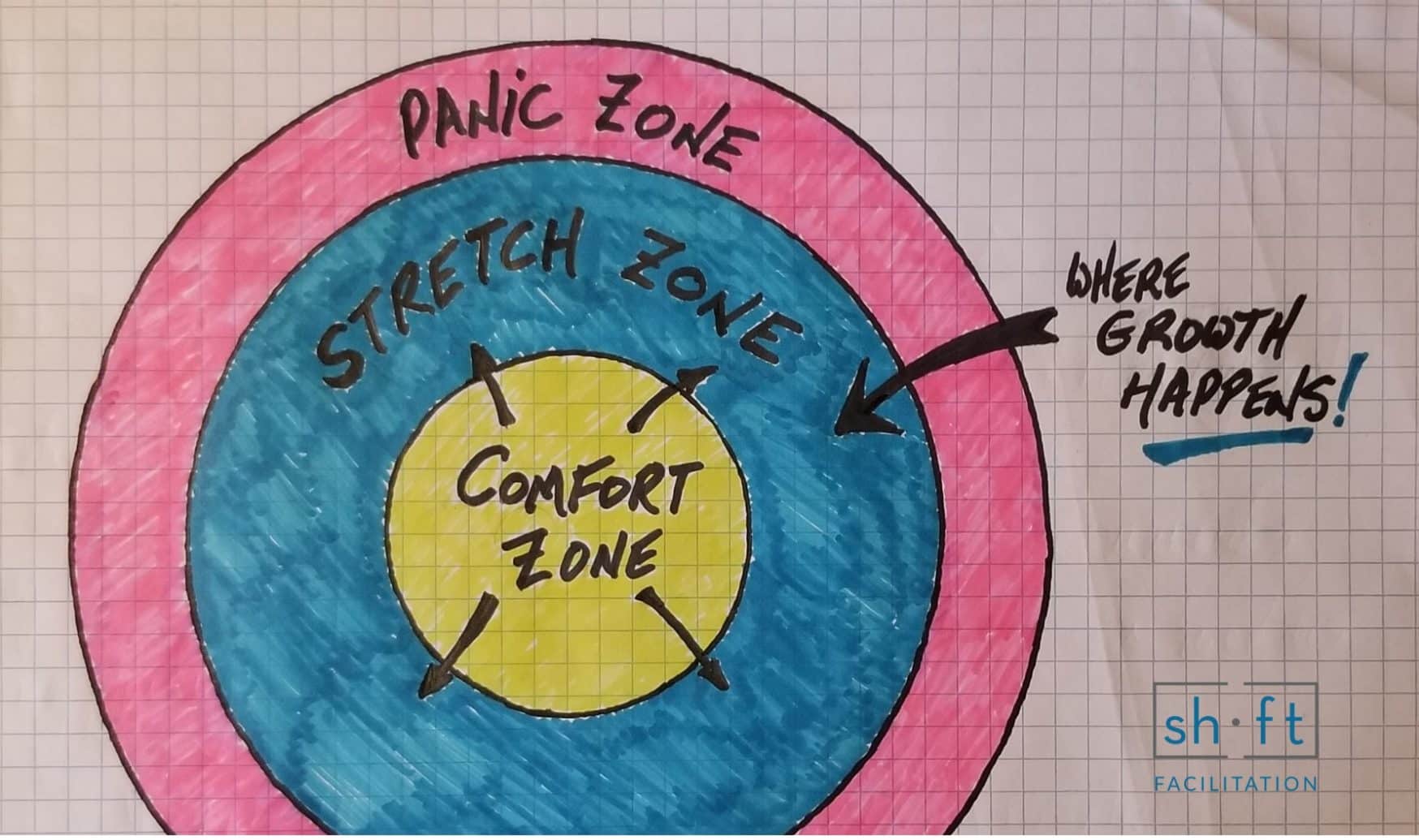Good facilitation, like good design, often goes unnoticed. During one of your sessions, people might feel good and not really know why.
We know why; it’s because you kick ass at facilitating stuff. But do you know why you’re good at that? If I were a betting man, and I am, I’d wager it’s because you’re comfortable, to a greater degree than the general population, with discomfort.
As facilitators, we take people on a journey. Along that journey are new things. New things make people feel weird. Our job is to let people feel that weirdness, while also feeling safe.
How do we do that? Good question!
Here are 3 tips on how to make discomfort more comfortable:
- Let participants know they will feel uncomfortable
- Stand by your decisions
- Expose yourself to more uncomfortable situations
Tip 1: Let participants know they will feel uncomfortable
Call it out! Set clear expectations for folks. Say something like, “We’re going to do some exercises, some might make you feel uncomfortable. That’s okay. They were designed to do that. They were also designed to keep you safe. Know that you might be uncomfortable, but you’ll also be safe.” I always start sessions by introducing The Three Zones: Comfort, Panic, and Stretch.

The Stretch Zone is the optimal zone for learning. It’s where participants start to feel a little bit comfortable all the way to a lot uncomfortable, but before they shut down. When someone shuts down, they’ve entered the Panic Zone. You want to avoid the Panic Zone.
I let people know that we’ll be spending time in the Stretch Zone; this way when people start to feel uncomfortable, they have a name for it and an understanding of the value of being there. By knowing where they are (Stretch Zone) and why it’s important for learning, they can stay there for longer and embrace what’s going on.
Let people know what’s going to happen, so that when it happens, they know it’s a normal part of the process.
Tip 2: Stand by your decisions
As leader of the group, it’s up to you to create a space where participants can explore, learn, and stumble. A key factor in creating that place to explore is having the confidence to stick with your choices.
You’re a professional; do not undermine yourself.
I’ve seen it happen too many times. A facilitator limply introduces an exercise and a participant pushes back on it. The facilitator then gives up on the exercise and moves on to something else. Do. Not. Do. That.
You’re the person in the room that’s taking people on a journey. If you’ve decided to do a certain exercise, do it! And own it! By owning your own decisions, you create a safe space for people to explore, because they know you’re in control.
Go back to tip 1. Let people know they could be feeling resistant to some discomfort. Assure them the exercise is safe, fun (hopefully) and in their best interest. As soon as you start to undermine yourself and fall prey to people’s natural inclination to stagnate, you’re doing a huge disservice to both yourself and your clientele.
Make a plan and stick to it; you know what you’re doing.
Tip 3: Expose yourself to more uncomfortable situations
It’s easier to take someone somewhere when you’ve been there yourself. Good learning is uncomfortable. Acquaint yourself with the feelings that emerge when you’re in your Stretch Zone, so that you can be more empathetic toward your participants. Once you’ve sat with discomfort for long enough, you become more able to hold space for others who are going through it. Some uncomfortable things you can try:
- Take improv classes
- Ask for honest feedback about yourself from someone you care about
- Write something and make it public
- When you feel internal resistance to something, try it anyway (if it’s objectively safe)
Head forth into the world and seek to grow. The more often you can operate in the Stretch Zone, the better a facilitator you’ll become.
If you’re able to take people places that scare them, warn them it will be uncomfortable, and have confidence in your choices, you’re well on your way to becoming an incredible facilitator.
Invite discomfort and embrace the weird!


